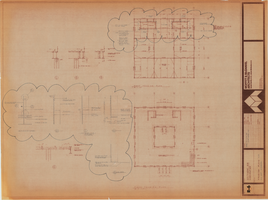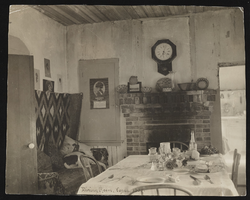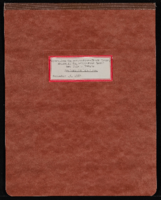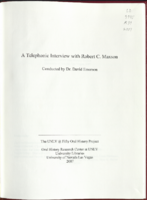Search the Special Collections and Archives Portal
Search Results

Southwest Gas Corporation office building: framing plans for air conditioner unit screens architectural drawing
Date
Archival Collection
Image

Photograph of a dining room in Las Vegas
Date
Archival Collection
Description
Image

Operation Oppurtunities Clark County Economic Opportunities Board Project Applications and Day Care Center: doucments, reports, correspondence, budgets
Date
Archival Collection
Description
From the Clark County Economic Opportunity Board Records -- Series II: Projects. This folder contains documents such as project applications from Operation Oppurtunities-Clark County Economic Opportunities Board Las Vegas, Nevada as well as correspondence about Clark County School District, Nevada Tuberculosis and Health Association, Division of Labor, documents and services on day care services center, program of work documents, and appendixes about area and resources
Text
Bob Stupak practicing for Globetrotter Game and NY News Coverage of event: video
Date
Archival Collection
Description
"Practice session night before game" Bob Stupak plays basketball inside a gym; Stupak shooting free throws inside Madison Square Garden before the game; NY-One coverage of Stupak during the Globetrotter game; Stupak poses with $100,000 donation check. Original media VHS, color, aspect ratio 4 x 3, frame size 720 x 486. From the Bob Stupak Professional Papers (MS-01016) -- Professional papers -- Audiovisual material -- Digitized audiovisual clips file.
Moving Image
Charles Lanman Papers
Identifier
Abstract
Charles Lanman Papers (1864-1868) contain the title page of the Dictionary of the United States Congress and the General Government, written by Lanman, solicitation requests for biographical information from notable government figures, and written replies. Of interest with regard to Nevada are the original handwritten letters from James W. Nye and William M. Stewart.
Archival Collection
Albert C. Phillips Photograph Collection
Identifier
Abstract
The Albert C. Phillips Photograph Collection is comprised of sixteen black-and-white photographic reprints and four photographic negatives depicting buildings in Caliente, Nevada which were originally taken between 1900 to 1967 and reproduced in approximately 1999 to 2005.
Archival Collection
David Bedford Photograph Collection
Identifier
Abstract
The David Bedford Photograph Collection (approximately 1980-1984) is comprised of twenty color photographic prints that depict the Las Vegas, Nevada Ice House, which was constructed to aid transportation of perishable goods for the Los Angeles and Salt Lake Railroad.
Archival Collection

Stella Kalaoram oral history interview: transcript
Date
Archival Collection
Description
Oral history interview with Stella Kalaoram conducted by Kristel Peralta and Cecilia Winchell on August 2, 2021 for Reflections: The Las Vegas Asian American and Pacific Islander Oral History Project. Stella Kalaoram discusses her childhood in Singapore, the occupations and ethnic diversity of her family, and the four languages she speaks: English, Mandarin, Malay, and Tamil. She shares her immigration journey to the United States with her husband, from Singapore to San Bernardino, California in 1990, and their move to Las Vegas in 2000. Stella also shares her employment experiences as a dental assistant, a housekeeper for the Cosmopolitan Hotel and Casino, and as a shop steward for the Culinary Workers Union. She also talks about contracting COVID-19 and her hospital experience, her family's differing religious faiths, and her translation work to empower the Asian-American community. Subjects discussed include: insurance benefits; Volunteer Organizer (VO); mask mandates; vaccine hesitancy; food traditions; language barriers; Baba and Nyonya cultures.
Text

Transcript of interview with William Morgan by David G. Schwartz, October 21, 2016
Date
Archival Collection
Description
Text

Transcript of interview with Robert C. Maxson by Dr. David Emerson, May 15, 2007
Date
Archival Collection
Description
Text
